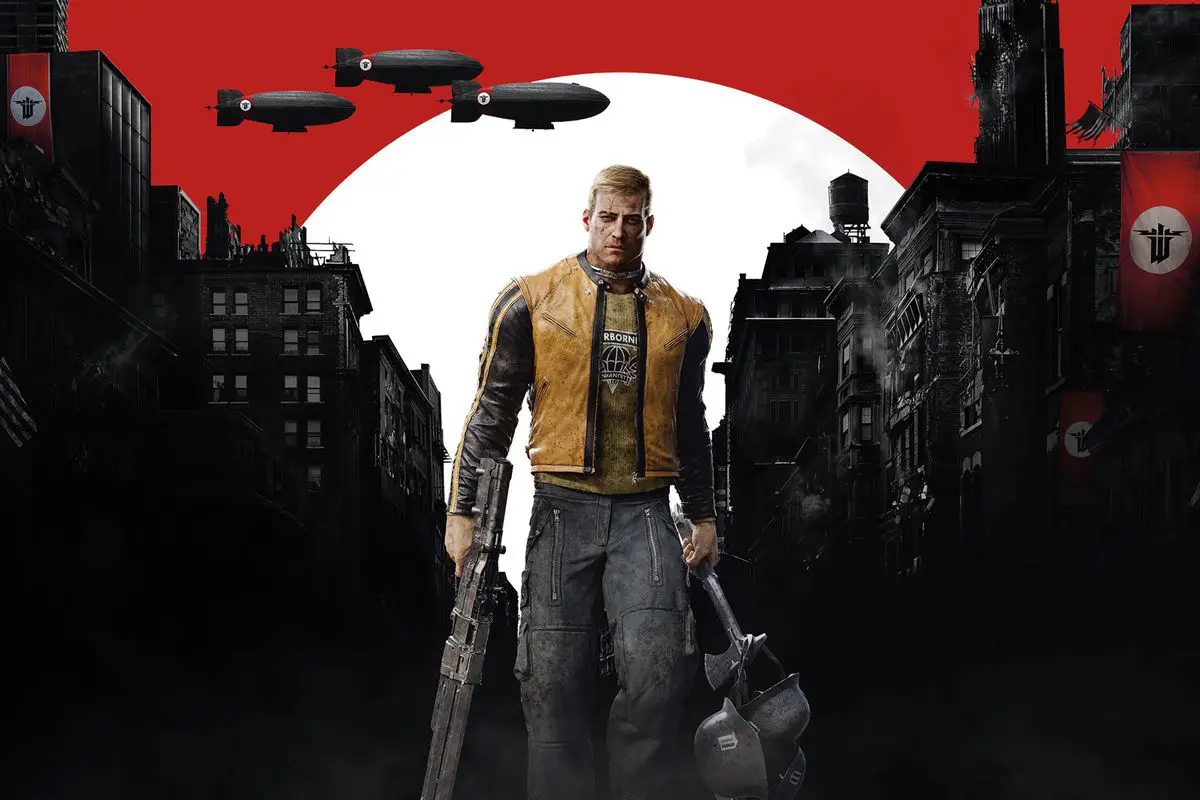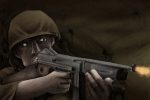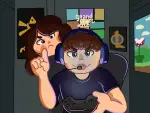Set for release next month, “Wolfenstein II: The New Colossus” is the sequel to 2014’s soft reboot of the series, “Wolfenstein: The New Order” and, depending on how you count them, the eleventh game overall (I see what they did there).
When I first saw the game’s E3 announcement trailer in June, I was pretty excited. I mean, there’s a rideable fire-breathing robot dog monster, how can someone not be excited about that? However, after replaying “The New Order” something occurred to me: “Wolfenstein II” ruins the ending of “The New Order.”
Beware of spoilers for “Wolfenstein: The New Order” below.
For those unfamiliar with the game, “Wolfenstein” is a series of alternate history science-fiction, first-person shooters set mostly during World War II and starring American spy (who’s actually pretty bad at spying) William “B.J.” Blazkowicz. While how far the Wolfenstein universe has deviated from history varies from game to game and developer to developer, “Wolfenstein: The New Order” begins with a Nazi and Blazkowicz waking up from a catatonic state in an alternate 1960s. The game was generally well received, successfully marrying old school and modern approaches to game design and being praised for its quality storytelling.
Given all of that, there’s no reason to believe that the next game will be any less well executed. The developers over at Machine Games clearly know their jobs better than most. The problem stems from the ending of “Wolfenstein: The New Order” and the resolution of a story arc introduced all the way back in 2001.
While “The New Order” is a soft reboot of the series, marking a change in tone and design philosophy but not actual continuity, it also serves as the final installment of a trilogy including “Return to Castle Wolfenstein” from 2001 and “Wolfenstein” in 2009. It is in “Return” that players are introduced to SS General Wilhelm “Deathshead” Strasse (his nickname is a reference to the Totenkopf symbol used by the SS), one of three Nazi scientists researching the paranormal on Himmler’s behest. Notably, he is the only one to escape and goes on to be the primary antagonist of the subsequent games.
The relationship between Blazkowicz and Strasse is a recurring element of the plot of “Wolfenstein: The New Order.” The two are positioned as equal opposites, which can be seen in everything from their actions to their character models. While Blazkowicz is a large, rather muscular man who solves most problems by punching or shooting them, Strasse is a withered old man who uses intelligence and deceit to get want he wants.
Blazkowicz is repeatedly demonstrated to be the compassionate sort, with side activities in the resistance base involving recovering a widow’s ring and a mentally disabled character’s toys. Strasse, meanwhile, in addition to being a sociopathic Nazi with a penchant for human experimentation, allows his men to be killed by feral mutants when he releases the creatures to kill Blazkowicz in “Return to Castle Wolfenstein.”
The two come close to killing each other multiple times over the course of the series, finally culminating in their showdown near the end of “The New Order.” After a multi-stage boss fight involving Strasse piloting a mech suit, Blazkowicz finally corners his old foe. However, before the hero can finish him off, Deathshead unpins a grenade. While the critically wounded Blazkowicz manages to crawl to a window where he can see his friends and his love interest escaping in a helicopter, the game ends with him ordering resistance members to detonate a previously stolen nuclear bomb, destroying the facility.
In addition to what, at the time, appeared to be Blazkowicz’s certain death (listening after the credits reveals the sound of helicopter rotors, so his survival isn’t totally out of left field), there are clues throughout the game that it may have at one point been intended to be the final Wolfenstein or at least the last one with B.J. as leading man. Throughout the game, it becomes increasingly clear that he and many of the other characters are tired of and frustrated with the fight. After all, Blazkowicz has been killing Nazis for years, but there seems to be more of them than ever.
The game overall has a much darker tone than the rest of the series, with Blazkowicz’s narration bringing up how many friends he has lost in the years of constant war and just how much the Nazis have corrupted and destroyed. The theme is reinforced by former RAF pilot Fergus. If the player chose to save Fergus early in the game, there is a cinematic near the midpoint where he complains about how he, and by extension Blazkowicz, are getting too old and worn out to keep the fight going much longer.
[su_youtube url=”https://www.youtube.com/watch?v=bkrwUzWeACg&has_verified=1″]
The ending is left bittersweet because, while the resistance has finally hurt the regime in a serious way, it cost much to get there. While there are still people who believe a better future can be won, victory is a long way off and far from certain. Though it can be debated whether or not this episode makes a good ending for a video game, it’s a fantastic ending period.
None of this means that there wasn’t a way to continue the story without tarnishing such a brilliant ending. Machine Games’ retro-futuristic dystopia is too interesting a setting to just be abandoned. The solution then, and one that may even have at some point been the intention, is to continue the series with a different character. Critics might complain about the plot advancing with a character other than B.J., the face of the franchise, but if handled properly, the payoff could be worth the risk.
The most obvious candidate for the new protagonist would be Anya, Blazkowicz’s love interest in “The New Order” and its sequel. While casual players may remember her as the nurse turned resistance radio operator who cared for Blazkowicz during his coma, anyone who made a point of listening to all twenty-four of her “cousin’s” journal entries knows there is a lot more going on with the character.
Over the course of the roughly nine minute’s worth of audio, it’s revealed that, from 1940 to 1955, she led a one-woman resistance movement against the Nazis, and is implied to be the “Maławieś Serial Killer” mentioned in an in-game newspaper clipping. It is actually a very compelling story and arguably makes her the most developed character in the game, Blazkowicz’s included. Anya is also Polish, an ethnic group the Nazis considered sub-human, and witnessed her parents murdered by the Germans, so she has a very personal motivation for wanting the regime destroyed.
In the final mission, Blazkowicz is on his way to rescue Anya and several others from Deathhead’s compound, only to almost literally stumble into Anya’s already in-progress escape attempt. This establishes Anya not only as an interesting, well-developed and sympathetic character, but also one who is clearly able to take care of herself, which are all good traits for a protagonist to have. In the ending cinematic, when Blazkowicz is reciting most of the poem “The New Colossus,” the camera zooms in on Anya holding a lantern and guiding other escaping prisoners to safety.
With the benefit of hindsight, that could be interpreted as a clue suggesting the series is coming to America, since the poem is about the Statue of Liberty and Anya is briefly seen emulating it. However, without that knowledge, the scene could be interpreted as—no pun intended—passing of the torch. It even works thematically, providing an answer to Fergus’ question from the aforementioned mid-game cinematic of who will carry on the fight after he and Blazkowicz no longer can.
I don’t want it to seem like I’m passing judgment on “Wolfenstein II” prematurely. There’s still another month before it comes out and nothing I’ve seen so far suggests that it isn’t going to be good. However, I am saying that by effectively retconning Blazkowicz back to life, Machine Games is trading a fantastic ending to a great game for something that merely has the potential to be interesting.

















